As well as offering school trips abroad, we also arrange school trips right here in the UK for a variety of subjects. Here are some of our favourite curriculum-based activities, grouped by region. The great news is that many visits are either free or low cost for families!
If you’re a teacher, why not share these ideas with your students’ parents ahead of the half term?
The South East
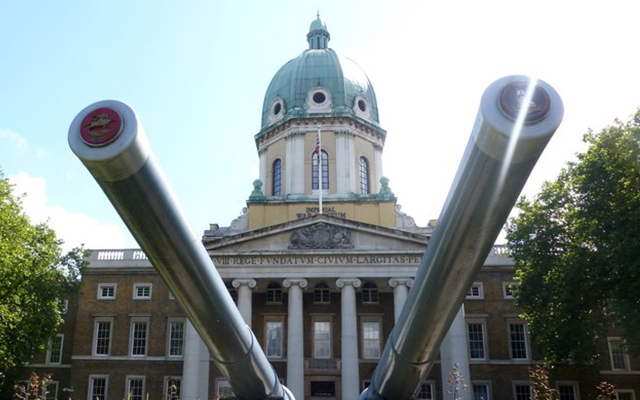
Of course, if you’re looking for curriculum-focused activities for October half term in London, you’re really spoilt for choice! There are so many educational visits in the capital that there really is something to enhance almost any subject.
Young historians are particularly well catered for in London. For those studying WWI, a visit to the Cenotaph or the In Flanders Fields Memorial Garden offers the opportunity to engage your children in an interesting discussion about the importance of remembrance and, indeed, the importance of history as a subject.
The Imperial War Museum is a must visit for children learning about WW1 or WW2 and the great news is that it’s free to visit!
The museum itself was founded while Britain was still in the midst of WW1 and the museum does an excellent job of bringing to life the experience of those who fought in that war and other conflicts since, from an immersive WW1 trench experience to eyewitness accounts of the Holocaust (please note that the Holocaust Galleries are not recommended for children under 14 years of age).
The Churchill War Rooms are also a great visit for young historians – after all, this is where real history was made! If your children are learning about WW2, they’ll love exploring this secret underground headquarters where all the important strategic decisions were made by Churchill and his cabinet.
And if your kids are learning about the Normandy Landings, also known as Operation Overlord, then a visit to HMS Belfast is a must. They’re actually running a fantastic family activity during the October half term that includes solving nautical puzzles, testing your balance for the choppy seas and learning more about the science and skills you’d need to survive on HMS Belfast when she was on active duty.
There are some great opportunities for children learning about medicine through time too. At the Old Operating Theatre, they can discover the history of surgery, and at the Florence Nightingale Museum they can explore her life and work, as well as the wider history of nursing.
And, of course, for any young scientists the wonderful Science Museum, which is free to visit (although bookings must be made in advance), is unmissable!

Are your children learning about WW2 and the Battle of Britain? Then a trip to Kent offers some fantastic opportunities to enhance their learning during the October half term!
At the Battle of Britain Museum in Hawkinge, near Folkestone, your kids will love the opportunity to see some of the aircraft that took part in the Battle of Britain.
They’ll also see some original RAF and Luftwaffe uniforms, as well as some of the personal effects of those who flew in the Battle of Britain.
Nearby, in Capel-le-Ferne, is the Battle of Britain Memorial. As well as being incredibly thought-provoking, the memorial has an excellent visitor centre, which is in the shape of a Spitfire wing. Inside is the interactive Scramble Experience, which will give your children the opportunity to see what it was like for the Few during the Battle of Britain.
At Dover Castle, you can explore the secret wartime tunnels hidden deep inside the White Cliffs of Dover. Here, audio-visual exhibits will bring to life the drama of Dunkirk and Operation Dynamo. There’s also a WW2 dressing station, where your children can learn more about how soldiers’ injuries were treated.
And in Ramsgate, you can visit the country’s largest network of civilian wartime tunnels. Here, your children can learn more about how the local people took shelter in these tunnels and what life was like underground during WW2.
The South West
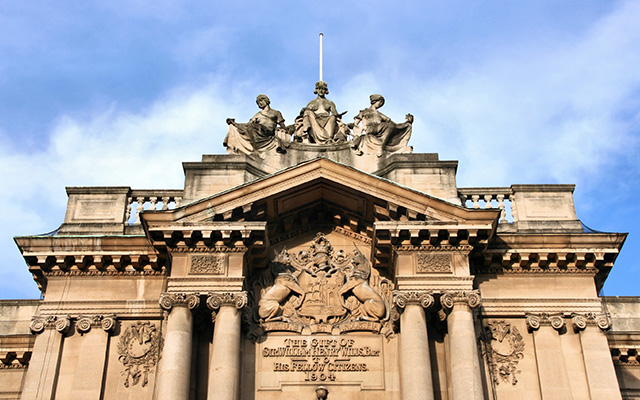
Bristol is popular with our art groups, as it’s such a creative city with so many curriculum-linked activities.
In particular, the visits here are fantastic for developing children’s personal reflections and independent judgement on art. They can also really help them to understand the contexts in which art was created and the continuity and change evident in different styles and genres.
Unmissable on an October half term visit to Bristol is the Bristol Museum and Art Gallery. And the great news is that entry is completely free!
On the museum’s ground floor, you can explore the ancient Egyptian and Assyrian civilisations. And this is where you’ll find Banksy’s famous Paint Pot Angel too!
On the second floor is where you’ll find the art galleries. The variety of art on display here ranges from European Old Masters to modern and contemporary art. There is art from China and Japan, and local Bristolian art to explore too.
We would also highly recommend a visit to the Royal West of England Academy in Clifton. Bristol’s oldest art gallery, the RWA is housed in a magnificent Grade II listed building. The permanent collection comprises over 1000 works of art, including works by arts from the Newlyn, St. Ives and Bloomsbury Schools.
Bristol is, of course, also famous for its street art and so a guided walking tour of some of the city’s best examples of street art could also be an inspiring experience for young artists. Of course, they’ll learn more about one of Bristol’s most famous sons, Banksy, as well as discover why Bristol has such a rich history of street art.
If you don’t mind venturing a little further, you might like to head to nearby Portishead, where there’s a fantastic art trail with contributions from over 20 visual artists.
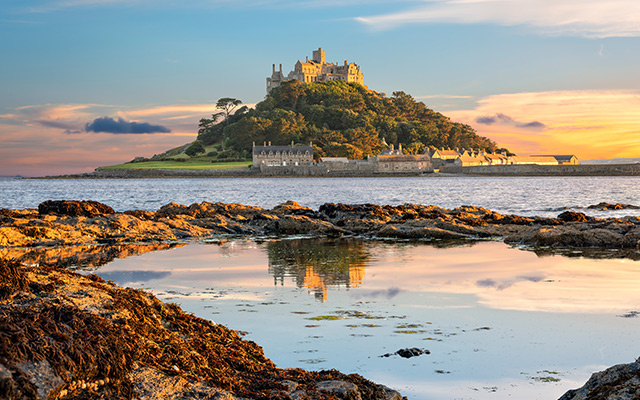
Cornwall is also a popular destination with our art school groups. St. Ives, in particular, has attracted artists since the 19th century and offers children the exciting opportunity to meet working artists in their studios, as well as visit the impressive Tate St. Ives and the Barbara Hepworth Museum and Sculpture Garden.
Tate St. Ives overlooks Porthmeor Beach and, in particular, showcases the works of local artists which is really the inspiration for young artists from the area. The gallery is extremely family friendly – you’re welcome to make noise in the gallery, so getting children engaged in the art is really easy. They even suggest some great games for getting children to engage with the art which will really help them to develop their own reflections and judgement of the pieces in front of them.
The Barbara Hepworth Museum and Sculpture Garden is definitely worth a visit too – the museum preserves the 20th century studio and garden of Modernist sculptor Barbara Hepworth, where she lived and worked for 26 years. Here, children can learn more about the creative process, and the context in which her art was created, as well as explore Modernism.
Cornwall is also a real treasure trove for young geographers. You could explore the features of coastal landscapes at Lizard Point, St. Michael’s Mount and the dunes of Hayle Towans.
And a fixture of almost all of our geography school trips to Cornwall is a visit to the Eden Project, which is also fantastic for families! Here, your children can explore a tropical jungle and the Mediterranean, without even leaving the UK.
There’s also an exhibition on the invisible lifeforms and systems we need for biodiversity and a stable climate. This is a fantastic visit for any children studying ecosystems, biodiversity and sustainability at school.
The Midlands
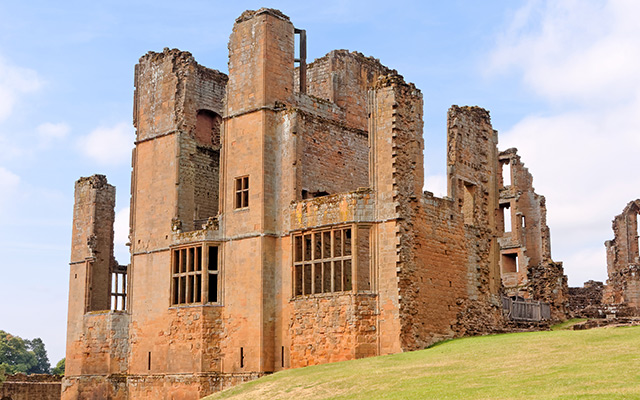
Stratford-upon-Avon is a lovely little town in Warwickshire that happens to be the birthplace of one of the English language’s greatest playwrights – William Shakespeare! This makes it a fantastic place to visit during the October half term for children studying Shakespeare in English literature or drama, or Elizabethan England in history.
You can, of course, visit Shakespeare’s Birthplace, Anne Hathaway’s Cottage and Shakespeare’s New Place, all of which will help your kids to better understand where the playwright came from and what life was like in England during the 16th century.
You could also visit the Tudor World Museum, which is also in Stratford-upon-Avon. This interactive museum brings to life the Tudor period and could see your children take part in a witch trial and try their hand at writing with a quill, among other things. You could also choose to take the Shakespeare tour, where you’ll be guided around the town by the Bard himself!
For more of an insight into Elizabethan architecture and the life of the nobility during the time, we can highly recommend visits to nearby Kenilworth Castle and Kirby Hall too.
The North East
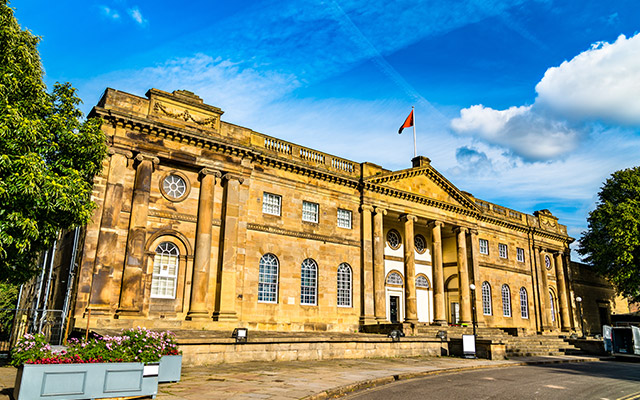
If your children are learning about crime and punishment in their history lessons at school, then you’ll be pleased to know that York and nearby Ripon offer some really exciting attractions that you can visit over the October half-term to enhance their learning.
York Castle Museum, for example, is a fantastic day out and provides the opportunity for children to learn more about crime and punishment as the museum itself is housed in an 18th-century prison!
You’ll discover the story of the prison’s most infamous inmate, Dick Turpin, as well as other prisoners who suffered a variety of different punishments for their crimes.
If you are local, you may like to check the museum’s database, to see if any of your ancestors ended up in the prison!
And if you head over to Ripon, you can enjoy a whole day exploring its three fantastic museums – the Workhouse Museum, the Courthouse Museum and the Prison & Police Museum.
Both York Castle Museum and the Ripon Museums charge entrance fees, but tickets are then valid for a year at both, so you can revisit as many times as you like!
Another top tip from us for a curriculum-focused October half-term visit is York's Chocolate Story. As you can imagine, this is one of the most popular visits we offer for school groups visiting the city and it’s great for children doing food technology at school. They’ll learn about how chocolate is made and how the Quakers made York a centre of chocolate production in the UK. And, most importantly, they’ll get to taste some!
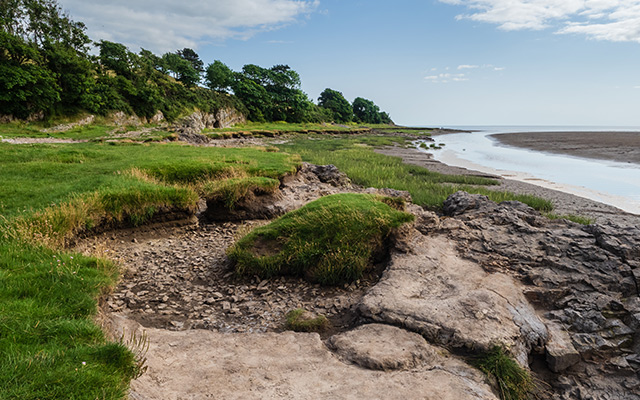
If your children are learning about glaciated landscapes of the UK, rivers and fluvial processes or weathering and erosion in geography, then we would highly recommend exploring the Yorkshire Dales this October half term!
Lots of our geography school groups choose to base themselves around Malham, where they can explore Malham Cove, Gordale Scar and Janet’s Foss.
Ingleborough Caves and White Scar Caves are also very popular with our geography groups as these are excellent places in which to explore erosion and the power of water.
Or you could head to Arnside and Silverdale to explore limestone landforms and coastlines.
While you’re exploring, encourage your children to develop their map reading and navigation skills – these will be very useful when they get back into their geography classroom!
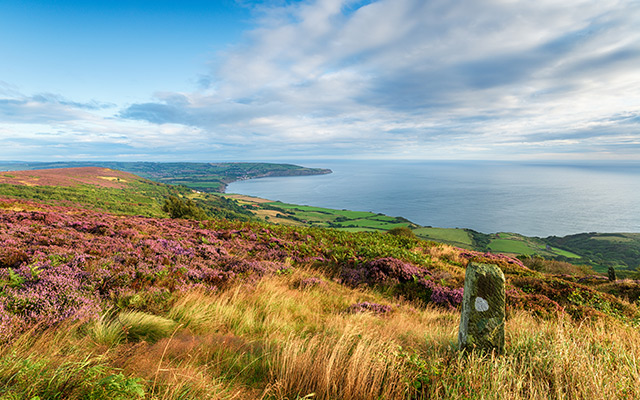
Your children are very lucky to live in Yorkshire – as well as the beautiful Yorkshire Dales, you also have the spectacular North York Moors National Park nearby.
Another very popular destination with our geography school groups, the North York Moors offer children the opportunity to explore a number of topics, from coastal landforms to ecosystems and biodiversity, and weathering, erosion and deposition.
You don’t need to plan a detailed itinerary for your day out to the North York Moors. Just decide which part you want to explore and how you want to explore it – walking, cycling, fell running and even horse riding are all great ways to discover this beautiful landscape.
Just having the opportunity to explore this natural beauty and use some of what they’ve learned in their geography lessons to discuss with you what they’re seeing will help to reinforce and enhance their learning.
But if you’re really not sure whether to head to Whitby to explore the coastal landscape, or Dalby Forest and its unique rigg and dale landscape, just head to the park’s website where you’ll find loads of great ideas.
The North West
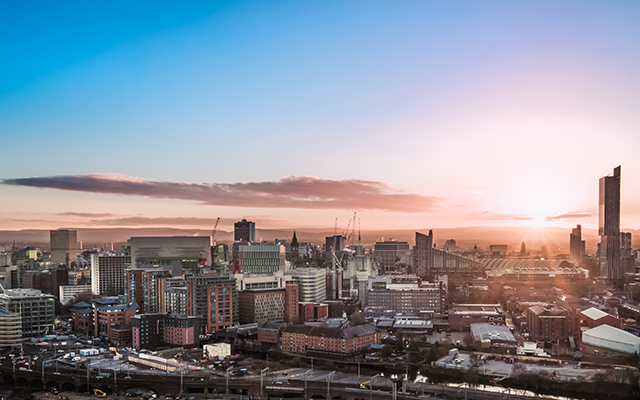
Manchester is increasingly popular as a school trip destination for art and history groups, and there are lots of curriculum-based activities to enjoy here.
Young historians will particularly enjoy a visit to the Imperial War Museum North, which is completely free to visit! Located in Trafford Park, the museum is in an area which was heavily bombed during the Manchester Blitz.
Telling the story of over a century of war of conflict, the museum is particularly useful for children studying WW1 or WW2 in school. From 14th October, there will also be an exhibition of photos from the frontline in Ukraine, so this is also a good opportunity for children to better understand the ongoing conflict there.
Over half term, the museum is running a few events for families, including the Camouflage Unit Camp, an immersive event with actors where your children can discover the deception and illusion employed by the Camouflage Unit during Operation Bertram in Egypt in 1942.
And if you don’t mind heading out of the city, we can highly recommend a visit to nearby Stockport, to visit the Air Raid Shelters, which offer children the chance to explore life in wartime Britain and discover some of the stories of local people who sheltered in these tunnels.
Manchester is also a fantastic destination for young artists and visits to any of the excellent galleries here will help children to develop their personal reflections on and independent judgements of art.
The Lowry is, of course, a great place to start as it will allow children to explore the works of a local artist inspired by Pendlebury and Salford. Your children will be able to see works of his from throughout his career, to see how his style changed and developed.
Or head to the Manchester Art Gallery, which is completely free to visit. On Mosley Street, right in the city centre, the gallery’s fine art collection is huge. Here, you’ll find works by Impressionist Pierre Adolphe Valette, who taught L.S. Lowry.
You’ll also see works by John Constable, Edgar Degas, Camille Pisarro and Pierre Auguste Renoir among many, many others.
And don’t forget about the Whitworth Gallery, which is also free to visit. The focus here is on modern art and you’ll be able to see works by Barbara Hepworth, David Hockney, Vincent Van Gogh and Pablo Picasso here.
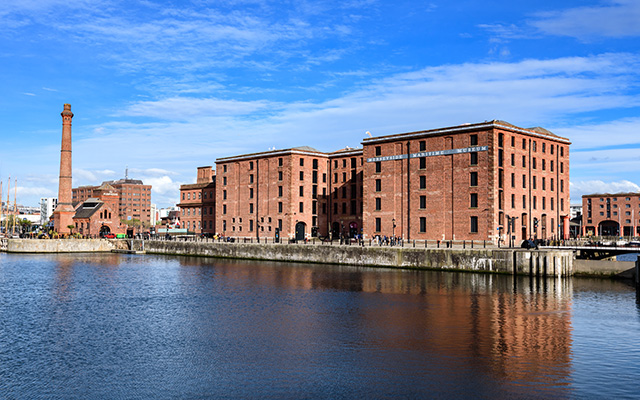
Liverpool too is a great choice for young artists and historians!
If your children are studying WW2 at school, then we would highly recommend a visit to the Western Approaches Museum. Hidden away under the streets of Liverpool, you once needed to sign the Official Secrets Act to enter this building – now all you need is a ticket which, once bought, is valid for an entire year, so you can return as often as you like. And children under the age of 16 go free!
Here, your children will discover how Liverpool played an important part in combating the threat of U-boats and in the Battle of the Atlantic during WW2. You’ll be able to explore the Central Operations room and a cypher room. You can even visit a NAAFI and explore a 1940s street scene!
And if you head to the Merseyside Maritime Museum during October half term, your children can learn more about the Liverpool Blitz of May 1941 and what it was like for Liverpudlians who lived through the devastation caused. And the great news is, entry is free!
Young artists are spoiled for choice in Liverpool. You’ll find one of the largest art collections in the UK outside of London at the Walker Art Gallery.
The collection includes works from the 14th century right up until the present day, by artists including Rubens, Rembrandt, Monet, Degas and Hockney. It’s completely free to visit and is a great option if you want your kids to enjoy an overview of the history of European art.
Another free option is the Lady Lever Art Gallery on the Wirral. This gallery focuses more on Victorian and Edwardian taste and the collection includes predominantly 19th century paintings and sculptures, although there are some examples of late 18th and early 20th century works too.
If they’re interested in modern and contemporary art, Tate Liverpool at the Albert Dock is a great choice. Entry to the collection is free, although for some exhibitions there may be a charge.
Perhaps your children are beginning to show an interest in photography or film? The Open Eye Gallery is a small gallery dedicated to photography that is completely free to visit.
FACT Liverpool is also free to visit and focuses on video, new media art and digital culture, which could be a really exciting, inspiring visit for your young artists!
And if your children are more interested in sculpture, why not take them to Crosby Beach to see Antony Gormley’s Another Place, or Plensa’s Dream at Sutton Manor Colliery in St. Helens?
Scotland
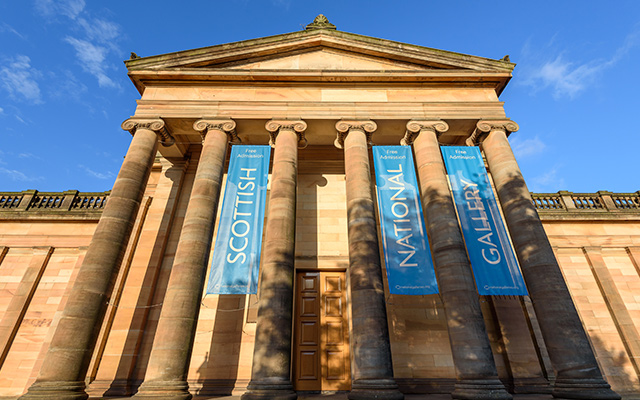
The Scottish capital is full of exciting educational activities for children and is increasingly popular as a school trip destination, particularly for art and history groups.
Historians studying the history of medicine will particularly enjoy exploring Edinburgh at half term. The History of Surgery Museum is one visit that is completely unmissable. Here, your children will learn about Scotland’s significant contribution to the development of surgical practice.
There’s also an interactive dissection table and surgical instruments dating from Roman times to the present day. Your children will also learn more about the future of the field thanks to the exhibition on robotic surgery.
For young artists, there’s a great variety of art galleries, museums and other art-focused attractions in Edinburgh.
The Scottish National Gallery of Modern Art is an excellent choice, particularly for developing your child’s independent reflections and judgement of art. The museum’s collection includes over 6,000 works of art, including pieces by internationally famous artists such as Andy Warhol, Damien Hirst and Salvador Dali.
The Scottish National Portrait Gallery is also worth a visit, especially if your children are interested in portraiture. The collection is huge, with around 3,000 paintings and sculptures, 25,000 prints and drawings and 38,000 photographs.
And if your child is more interested in contemporary art, we can highly recommend the Fruitmarket Gallery or the Talbot Rice Gallery, the University of Edinburgh’s public art gallery.
And the great news is, it’s completely free to visit all of these galleries!
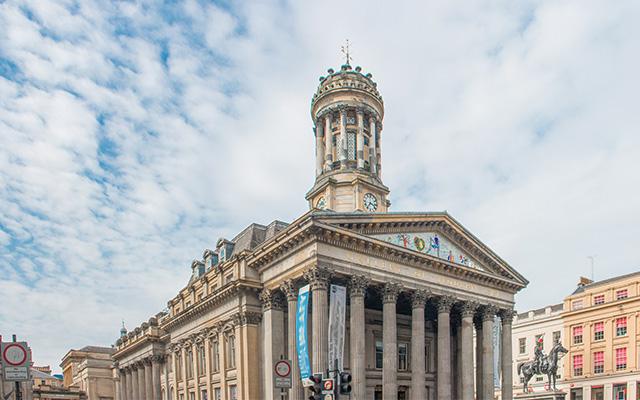
Glasgow also boasts plenty to enthral young artists and is home to Europe’s largest civic arts collection which includes works by Van Gogh and Monet.
There are plenty of excellent museums and galleries here to inspire young minds. The Kelvingrove Art Gallery and Museum, for example, boasts 22 galleries, with exhibits including ancient Egyptian artefacts, taxidermy and many important artworks by Old Masters such as Rembrandt and Impressionists such as Monet. And it’s completely free to visit!
The oldest museum in Scotland, the Hunterian is a complex of museums operated by the University of Glasgow. The Hunterian Art Gallery showcases the university’s extensive art collection which includes the majority of Charles Rennie Mackintosh’s watercolours.
And for contemporary art, head to the Gallery of Modern Art, where you can see works by artists such as Andy Warhol and David Hockney.
We hope we’ve given you some inspiration either for your children this October half term, or to share with your students’ parents! Have a great half term from all of us here at Halsbury Travel.